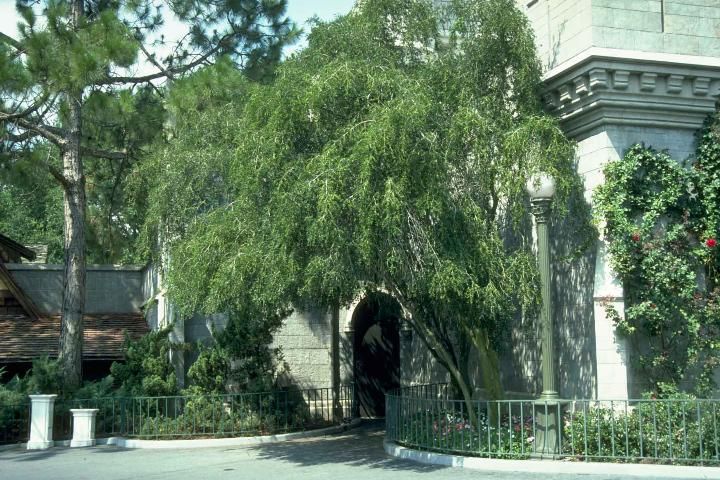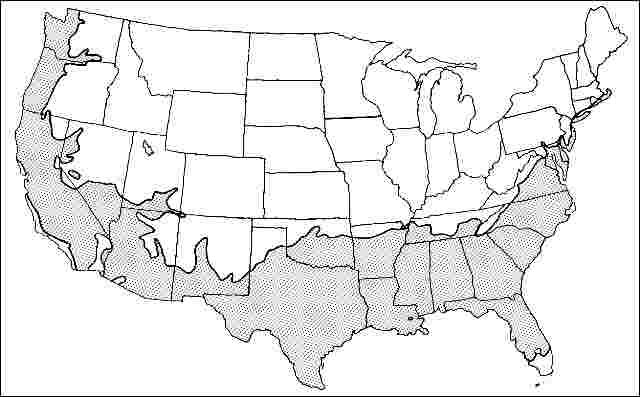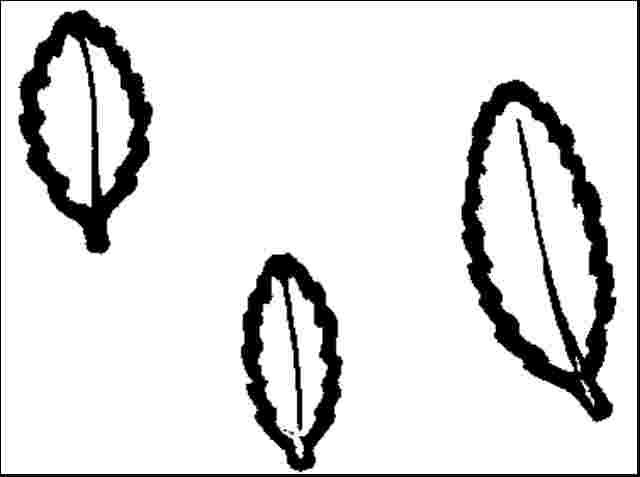Introduction
Weeping Yaupon Holly makes a very distinct, irregular, weeping form with its upright crooked trunks and slender, curved, pendulous branches clothed with small, oval, grey-green foliage. Many nursery operators produce this tree with several trunks in a clump. Capable of reaching 30 feet or more in height, Weeping Yaupon Holly is most often seen 15 to 20 feet tall with a spread of only 6 to 12 feet. Old plants will spread to 25 feet. The inconspicuous male and female flowers appear on separate plants and are followed in fall and winter by a spectacular display of the translucent red berries which attract wildlife. The flowers attract bees for several weeks. Purchase plants with berries on them (females) if you want a berry-producing tree.

Credit: Ed Gilman
General Information
Scientific name: Ilex vomitoria
Pronunciation: EYE-lecks vom-ih-TOR-ee-uh
Common name(s): Weeping Yaupon Holly
Family: Aquifoliaceae
USDA hardiness zones: 7A through 9B (Fig. 2)
Origin: native to North America
Invasive potential: weedy native
Uses: parking lot island < 100 sq ft; parking lot island > 200 sq ft; parking lot island 100-200 sq ft; tree lawn 3-4 feet wide; tree lawn 4-6 feet wide; tree lawn > 6 ft wide; street without sidewalk; container or planter; deck or patio; screen; specimen; urban tolerant; highway median; Bonsai
Availability: not native to North America

Description
Height: 15 to 30 feet
Spread: 6 to 12 feet
Crown uniformity: irregular
Crown shape: weeping, upright/erect
Crown density: open
Growth rate: moderate
Texture: fine
Foliage
Leaf arrangement: alternate (Fig. 3)
Leaf type: simple
Leaf margin: serrulate, crenate
Leaf shape: ovate
Leaf venation: brachidodrome, pinnate, reticulate
Leaf type and persistence: evergreen
Leaf blade length: less than 2 inches
Leaf color: green
Fall color: no color change
Fall characteristic: not showy

Flower
Flower color: white/cream/gray
Flower characteristics: not showy
Fruit
Fruit shape: round
Fruit length: less than .5 inch
Fruit covering: fleshy
Fruit color: red
Fruit characteristics: attracts birds; showy; fruit/leaves not a litter problem
Trunk and Branches
Trunk/bark/branches: branches droop; not showy; typically multi-trunked; thorns
Pruning requirement: little required
Breakage: resistant
Current year twig color: gray
Current year twig thickness: thin
Wood specific gravity: unknown
Culture
Light requirement: full sun, partial sun or partial shade
Soil tolerances: sand; loam; clay; acidic; alkaline; well-drained; extended flooding
Drought tolerance: high
Aerosol salt tolerance: high
Other
Roots: not a problem
Winter interest: yes
Outstanding tree: yes
Ozone sensitivity: unknown
Verticillium wilt susceptibility: resistant
Pest resistance: resistant to pests/diseases
Use and Management
The tree is best used as an accent or specimen due to its unusual form, but planted about 8 to 10 feet apart makes a nice screen in the full sun. As the tree grows older next to a sidewalk or patio, lower branches can be removed to allow for pedestrians to pass beneath.
A sturdy North American native, Weeping Yaupon Holly is adaptable to a wide range of cultural conditions, from well-drained to wet, acid to alkaline, and sun to part-shade. It is very tolerant of drought and sea salt, and is one of the most durable and adaptable of the small-leaved evergreen Hollies for use in southern landscapes. Light pruning may be necessary to maintain shape, but unlike the species it requires less maintenance because it does not sprout from the roots.
Propagation is by cuttings.
Pests
Scale, leaf miners, mites, aphids appear to form a long list of problems, but none are normally serious.
Diseases
No diseases are of major concern.